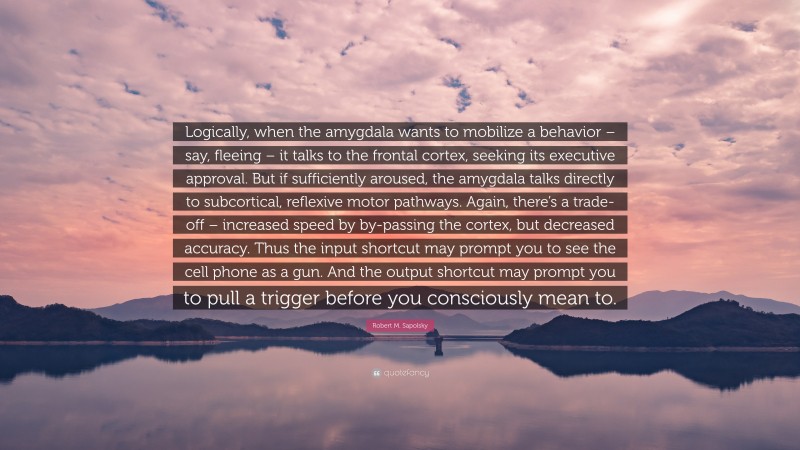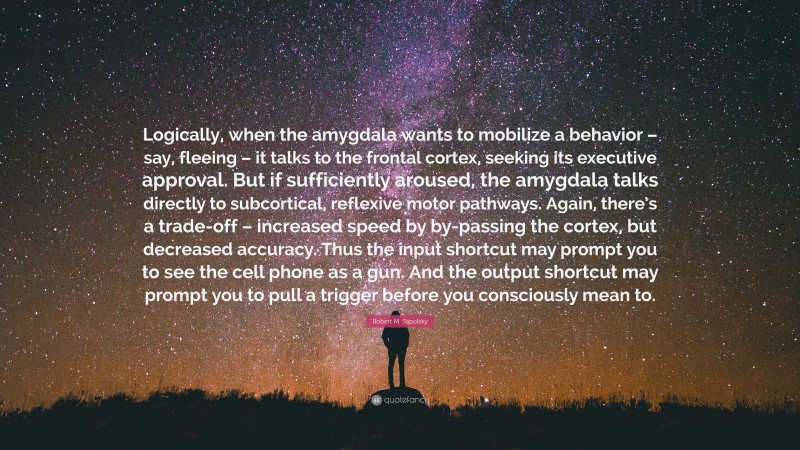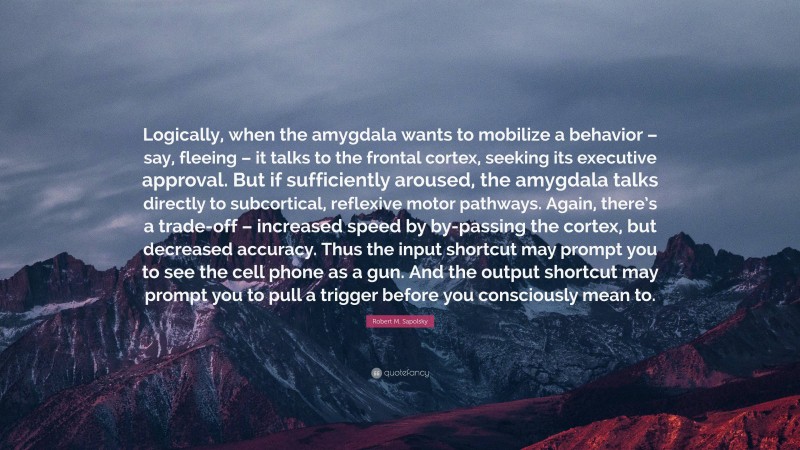
“Logically, when the amygdala wants to mobilize a behavior – say, fleeing – it talks to the frontal cortex, seeking its executive approval. But if sufficiently aroused, the amygdala talks directly to subcortical, reflexive motor pathways. Again, there’s a trade-off – increased speed by by-passing the cortex, but decreased accuracy. Thus the input shortcut may prompt you to see the cell phone as a gun. And the output shortcut may prompt you to pull a trigger before you consciously mean to.”















